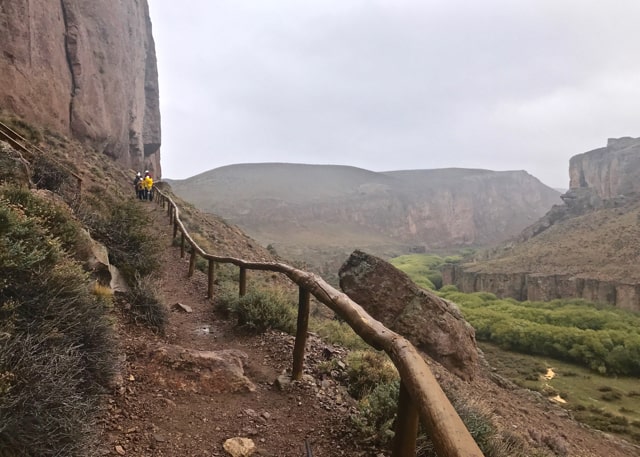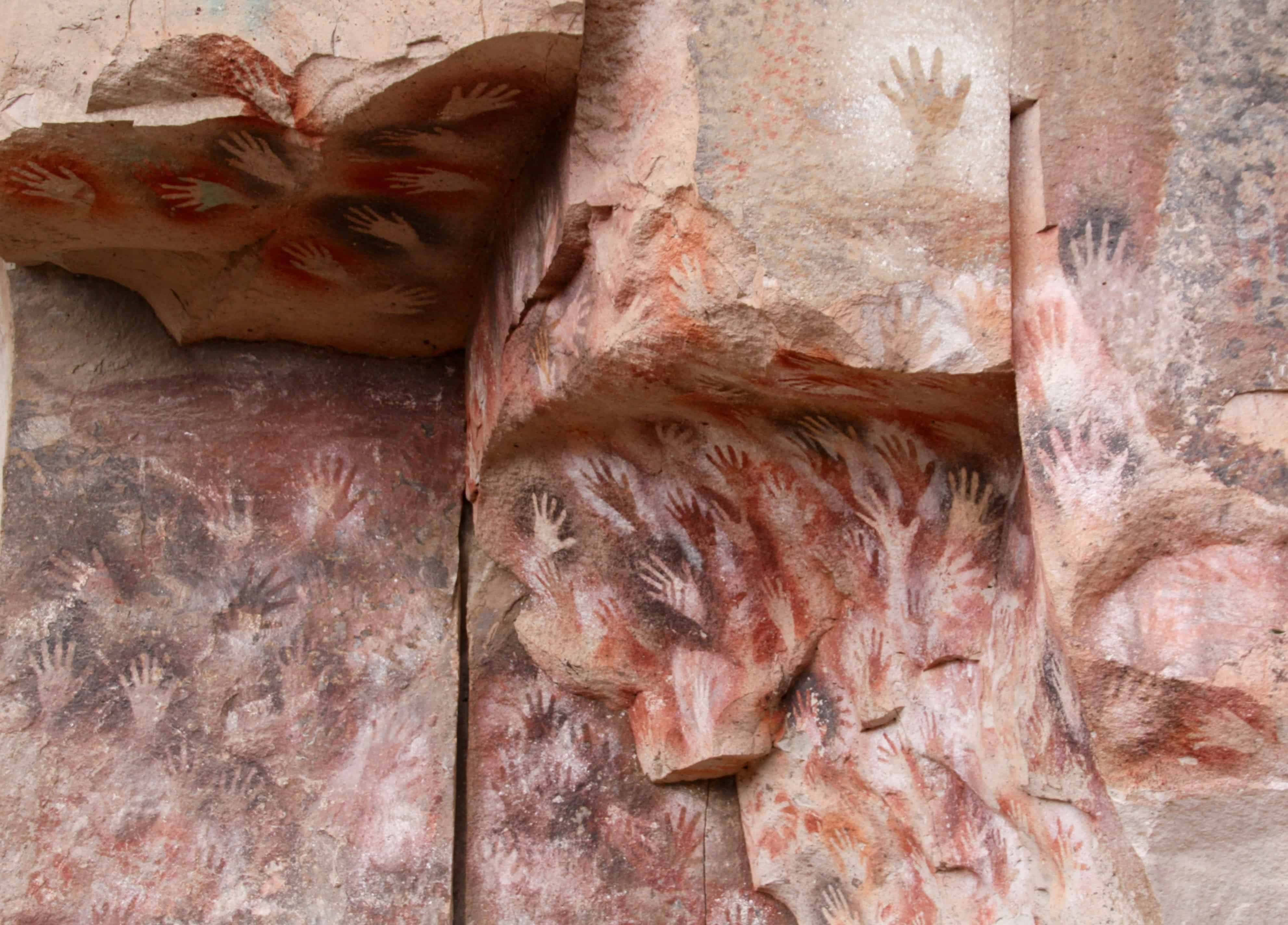Nine thousand years ago, Argentina’s first people roamed the Patagonian steppe. Through the seasons, the nomadic hunter-gatherers followed the guanaco, their main food source, from the high desert plateaus to the deep canyons of the Río Pinturas.
There, they left countless markings on the caves and canyon walls, an extraordinary collection of ancient rock art that survives today. It’s to the region’s most famous site, Cueva de Las Manos – the Cave of the Hands – that we’re headed.

It’s dark and wet when we step off the bus in Perito Merino, a small mining town on Argentina’s Ruta 40. With a 12-hour overnight journey from El Chalten behind us, and another 12-hour ride to our next stop, we’re acutely aware, as we stand soaking in the silent street, that we’re in the middle of nowhere.
Perito Merino, though, is the gateway to Cueva de Las Manos and while there’s little (read: nothing) else to divert the visitor here, we’ve made the stopover specifically to visit this unique historic site.
More than eighty archaeological sites scatter the region, many threatened by local mining activity. Cueva de Las Manos, protected as World Heritage, is one of the only sites accessible to visitors. It’s also the longest stretch of rock art, extending some 600 metres along a canyon wall intersected by a small cave.
After dropping our bags at our hotel, we’re collected by Claudio of Zoyen Turismo, and jeep the two hours out to the site.
In good weather, visitors can opt to hike a challenging but spectacular five-kilometre trail through the canyon to the cave, but on the day we visit, low clouds blanket the terrain and a freezing rain is pelting the jeep, so we drive straight there.
At the site, we don hard hats and join a group for a guided tour in English and Spanish. Our guide Agustina shares what’s known about the people who created the prehistoric paintings: the Tehuelche and their ancestors lived in groups of 15 or so and they were tall, around 1.8 metres. Their harsh life meant a short one; they lived to around 35.

As we walk the length of the canyon wall, Agustina points out different groups of paintings, describing the evolution of the carbon-dated rock art over millennia, from nine-thousand-year-old hunting scenes to more abstract designs painted just 1,300 years ago.

We spot a dancer and a musician, then a complex hunt that seems to mirror the landscape opposite in the cracks and ledges of the rock. A series of nine circles, some with daubs of paint in the centre, is thought to represent a pregnancy calendar.

Along the entire stretch, hundreds and hundreds of hands layer each other in vivid prints and silhouettes of red, black, white, yellow, sometimes green. It’s this remarkable feature that gives the site its name, Cave of the Hands.
Most of the tracings are of left hands, suggesting a mostly right-handed population. They range in size from small, pudgy children’s prints near the ground to stencils of long-fingered adults on the overhangs above.

Random right hands can be spotted with a keen eye, along with the site’s famous six-fingered print.

Even on a cold, wet day, the rock art of Cueva de Las Manos is a poignant tribute to a people who were making their mark in South America well before the Incas built their empire on the continent.
To witness their very personal, very human signs, and their collective symbols and stories – legacies that have survived for thousands of years – makes a visit to this out-of-the-way corner of Argentina an experience you won’t soon forget.
Good to know
Getting there
Cueva de Las Manos is accessible by private car or tour only. It’s 116 kilometres from Perito Moreno, in Argentina’s Santa Cruz Province. Perito Moreno is around 800 kilometres (a 12-hour bus ride) from Bariloche. Even if you’re not a rock art junkie, visiting the site is an opportunity to break up the long overland journey through central Patagonia.
We travelled from Perito Moreno to Cueva de Las Manos with Zoyen Turismo. They can organise transfers as well as guided hikes to the cave during the high season. They’re online and they have an office in Perito Moreno.
Visiting Cueva de Las Manos
Cueva de Las Manos is open year-round, but you can only visit in the company of either a guide (October to April) or a site caretaker (May to September), both of which are organised at the site office.
Guided tours of the rock art run every hour in high season, and our tour was conducted in both English and Spanish. Visit the official website for more information.
Our transfers to and from the site cost AR900pp (around USD$60) and the guided cave tour was AR200pp (around USD$13).
Got a question or comment? Drop us a message below. For more epic Patagonia experiences and itineraries, visit our South America page.
